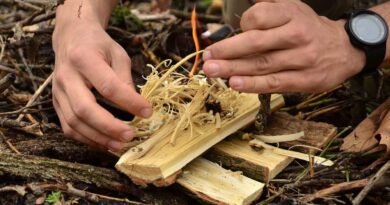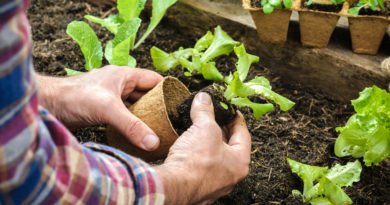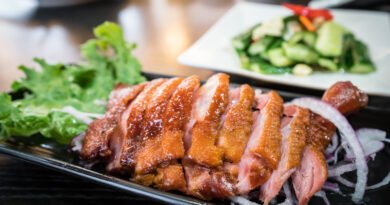Are They Part Of Your Preparedness Plan?
There seems to be a never-ending list of gear and items that are required in an emergency situation. There are so many factors that are difficult to address due to the unknown.
If you were to ask ten different survivalists for a list of their “Top” preparedness items, you’d probably get 10 different answers. And that’s perfectly OK! Every individual has a different location, climate, season, and experience level to deal with.
However, food and water supplies certainly rank high on that list for all of us. This is why growing your own food from heirloom seeds is highly beneficial.
Heirloom Seeds: Preparedness Plan Essentials
When it comes to food, there are many valid methods that will work well during an emergency scenario. I have peers who prefer storing food utilizing canning and pickling techniques.
There are others that choose to store freeze-dried and dehydrated foods. What we do have in common is that we all tend to keep our refrigerators and freezers well-stocked.

This will let us ride out any emergency that lasts 5-7 days. But we are fully aware that if the crisis lasts longer than a week, we will have to dip into our food storage.
Vital Nutrients
During an extended emergency situation, I want to have access to fresh vegetables. I may have a good amount of calories in storage but I need to couple that stored food with fresh vitamins and minerals.
This will go a long way in keeping both me and my family healthy and working at optimal levels. Our immune system will be taxed enough with all the added stress brought on by the emergency.
Consuming as much nutrient rich food as we can, will keep us on track to accomplishing our mission.
Many of us that are focussed on preparedness have fresh vegetables growing in our homes. We have outdoor gardens during the warmer months. I also utilize indoor planters that are growing vegetables and herbs all year round.
In addition, I personally enjoy the taste of various sprouts and have a new jar, sprouting every week. They are highly nutritious and a good example of food that can be grown indoors at any time.
Growing sprouts from seeds is an excellent way to keep your nutrition and food supply levels up, but what about growing other foods from seeds?
Getting The Right Seeds
When it comes to storing seeds for emergency preparedness, there is definitely no shortage of vendors. As with most things in the preparedness world… The more options, the more confusing that things tend to get.
Growing food from seeds was a skill set that I was lacking in. Like most people, I tend to practice what I am really good at and forgo the things that I am ignorant in.
Well, since I am always preaching for everyone to get out there and learn new skills- Let’s just say that it was time to diversify my knowledge by adding in some gardening techniques.
As I began my research, I was really getting confused. At first, I learned that any of the seeds that were GMO (genetically modified) were not what I wanted to plant in my garden.
Genetically modified seeds are unstable compared to what we will find in nature. That makes harvesting seeds from your initial crop virtually impossible. Plants grown from GMO seeds lack taste and offer inferior nutrition.
On the flip side… Heirloom seeds are old-time varieties that are open-pollinated and handed down through multiple generations. So I knew that heirloom seeds were the way to go.
The germination rate is another important factor that I was unaware of. It basically is a percentage of the seeds that are expected to grow from that specific batch.
If I were to plant 10 seeds and 8 1/2 of the sprouted, the germination rate would be 85%. This is extremely important because if you have a low germination rate, you would have to store and plant many more seeds than you would need to with a better germination rate.
In the meantime, we are wasting crucial supplies in the form of land, labor, water and even our preparedness budget.

Lastly, there was the pollination criteria. From the options that were available, open pollination was the preferred method for me.
Open pollination is when pollination occurs via insects, birds, wind, humans, or other natural means making the plants more genetically diverse.
This allows plants to slowly adapt to local growing environment and climate, maintaining their consistency year after year.
Once I digested this information, I began gathering and storing the best seeds that I could get my hands on. More importantly, I began working my gardening skill set.
Just like any other skill, the more practice that I put in, the better I will fare when I am called upon to use those skills. Getting food from seeds is not a simple process.
I know that if I do not devote time to understanding the why’s and the how’s of gardening… I will just be another gear collector crossing items off the list as I throw them into a go bag.
There is a plethora of valid information on growing food from seeds. A few clicks on the Google search engine and many credible sources come up in the results. As of right now, I am still in my “information gathering” stage but things have been going quite well.
I have grown some tasty food and I am becoming aware of what it will take to replicate the process in an emergency situation.
I realize that my current garden can easily be taken out by another Hurricane Sandy; It has happened before. I may also need to move out on foot and establish a garden in an extended-stay base camp.
What I would like to do is to share a few of the reasons that I feel everyone focused on preparedness, should have heirloom seeds as part of their survival plan.
So Let’s Dive Right In!
They Can Feed Your Family For A Lifetime:
The good thing about following the guidelines that I mentioned above is that you can gather seeds from the vegetables that you grow. In theory, you can gather a better harvest of seeds each year.
The plants get used to your climate and soil (with a lot of work on our end) and all things being equal, provide a better harvest each year.

Please keep in mind that this requires skills developed through experience. But if our ancestors were able to do it, while virtually being cut off from society…
It is a hell of a lot easier for us; With access to resources such as Google and YouTube. Practice your gardening skills now, while conditions are ideal. In an emergency scenario, the ideal is usually a four-letter word.
Feed Your Whole Group:
With the right amount soil, sun, and water, you can easily feed your whole family or group with less than half a pound of quality seeds in your kit or (seed bank). This will work well whether you are hunkering down with a home garden or if you have to be on the move searching for a more suitable location.
Lightweight:
Carrying extra weight that may not help your cause is always a downer, but when it comes to heirloom seeds… The weight is light and well worth it.
Seeds will react differently depending on the season, climate and other conditions. Being able to carry a variety of seeds will go a long way in making sure that you are continually prepared.

With an ample supply of seeds, you can do well in providing food for your family even if the germination rate is less than ideal. Once again, there are many unknowns in a SHTF situation, we need to continually be prepared for the worse case scenario.
Inexpensive:
When it comes to purchasing quality heirloom seeds, even the best quality seeds are relatively inexpensive. Luckily, we are currently in a competitive market. To us, that means better pricing, but it also means that there is a lot of inferior product in the market.

We need to do our research but also put the seeds to work. Only then will you truly know if your seeds are sustainable or just a false sense of security.
Grow Indoors Or Out:
As I mentioned earlier, being able to sprout from seeds gives you tasty and nutritious food. It takes less than a week to get your seeds to sprout. The best part is that you do not need soil, it doesn’t require much space and you can make it all happen indoors!

Tomatoes are another plant that seems to work well indoors. There are plenty of other vegetable varieties that can be grown indoors as well as out. An outdoor garden is usually the best bet when it comes to getting the most out of your seeds.
However, in an emergency scenario, the key to survival is having options. The fact that many varieties of seeds can be turned into food in both indoors and outdoors gardens makes, them a great addition to any preparedness kit.
Clean Food Source:
Plants are easily assimilated by our digestive system. In a survival situation, keeping stress to a minimum -including our digestive system- is imperative.
The fact that our bodies can extract nutrition from plants, with minimal stress to our system, makes them an ideal food source for when SHTF.

Growing these plants from heirloom seeds that are non-gmo and not from hybrids, keeps the vitamins and minerals gained from these plants, at their highest values. Keep that in mind when choosing your seeds.
Stores For A While:
Many of the seeds that are meant for emergency preparedness are packaged for long-term storage. Some manufacturers package them in mylar bags while others opt for plastic containers, which are commonly referred to as seed banks.
As long as the heirloom seeds remain in their packaging, kept away from heat, and remain dry, 5 years in storage is about average. You will certainly lose some of the germination rate each year so that needs to be factored into your plan

If you choose to collect your own seeds, the same principles apply. Keep them labeled, individually sealed and in a dry container. Store them in cooler temperatures and they will retain maximum value. Some people even opt to store their seeds in their freezer.
It is always a good idea to keep rotating the seeds in your storage. As you practice your gardening, rotate the seeds in storage with fresh seeds of the same variety.
Use For Bartering:
Once you put in a bit of time and learn to collect seeds from your harvest, you basically have an endless supply of seeds. In an emergency scenario, these seeds will give you great bargaining power.
Not everyone is going to put in the effort to become a good gardener. If you choose to master this skill, you will have an endless supply of viable currency.

Our paper money is going to have very little value when the SHTF. Developing skill sets, and having sought-after items to barter with, will keep you in good standing with others in your community.
Bottom Line:
When an emergency occurs, we need to have various food sources. Hunting, trapping, snaring and fishing are all options that we hope to have access to.
But what we store is truly the only option that we can count on. Having various food storage options is a must but we also need to possess the ability to grow our own food.

Having a good heirloom seed bank is something that everyone focused on preparedness should have. But possessing the skills to grow the seeds both indoors and out, in diverse climates, is something that we all need to add to our preparedness plan.

Follow me on Facebook, Instagram, and Twitter!
Editor’s Note: This post was originally published on August 13, 2017, and has been updated for quality and relevancy.



